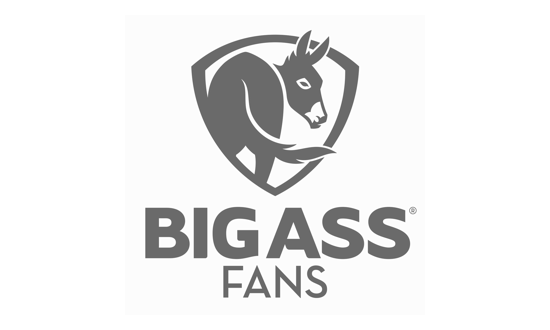By Mark Couto
In 1927, a 25-year-old former airmail pilot added a new destination to his route. By the time he landed in Paris, Charles Lindberg had changed the world.
Today, the world of horseracing is changing, and again the airplane has much to do with that change. Overall, there are fewer racetracks and fewer races, but there are many more racing opportunities with large purses. Often, these racing opportunities are in far off destinations such as Japan, Dubai, Brazil, Europe, and sometimes just across the country. Thanks in part to the airplane, competing successfully in these races is not the hardship it once was, despite the great travel involved.
In this ever-expanding world of horse racing, one principle of success in racing has not changed: the surest way to win races is to find the easiest spot to run. Fortunately for horsemen, the convenience of air transportation for horses has made it much less difficult to compete in that “easy spot.”
The Convenience of Air Travel
How convenient is it really to ship cross-country, or further, to compete in a race? Consider this illustration: A $250,000 Grade III stakes race for promising three-year-olds is scheduled in New York next weekend, and your horse is training superbly. You ask yourself, can we get there without taking the edge off of my horse? No problem!
At 3:00 a.m. Thursday morning, the horse is picked up at the barn. At 5:00 a.m., the horse and groom are safely on board as the FEDEX MD-11 freighter taxis for take-off at Los Angeles International Airport, destination Newark, New Jersey. After four hours fifteen minutes in the air, the aircraft and horses arrive safely. Within 20 minutes, all are on their way to Belmont Park, arriving and in a stall by 2:30 p.m. Eastern Standard Time. Total time enroute, eight hours thirty minutes, about the same amount of time it takes to travel by van between Northern and Southern California.
Competing on the international racing scene is relatively easy as well. Approximately three weeks in advance of shipment, preparation for transportation begins. “Preparation” in this context means securing international health certificates, blood test results, Customs and United States Department of Agriculture documentation, import permits, registry certificates, and pedigree and race records where required. Additionally, passports and visas are obtained for all personnel who will be accompanying and caring for the horse on the trip. A lot to do, right? Don’t worry; a competent equine transportation company will arrange these matters for owners and trainers.
With the abundance of cargo and freight airlines, schedules usually permit transportation in the week prior to any given race. Returning after the race is equally easy. Provided proper permits from the USDA have been obtained and the necessary Customs documents have been completed, when the horse is sufficiently rested, the journey home will begin. Upon arrival, a short three-day quarantine period is required where blood testing is carried out and a health exam completed. Once registry certificates are reissued by the Jockey Club, the horse is ready to resume racing.
The Process
I am often asked: “What is physically involved in shipping a horse by air?” Well, actually, the process has evolved into a relatively simple procedure. Generally speaking, horses are transported on what is called “main-deck freighter aircraft.” This type of aircraft is often configured exclusively for cargo but can include a mixture of passenger and cargo space. “Unit load containers,” or pallets, are used to ship the horses in the cargo space of these aircraft. The unit of space utilized is referred to as an “aircraft pallet position.” A pallet is a 8 x 11 foot aluminum/steel floor structure on top of which is constructed one to three “stalls.”
Typically, the first step is to load the horses – on the ground – into a specially designed container known as an aircraft stall or “air stable.” One can visualize this container as a horse trailer mounted on an aircraft pallet. Despite the pallet’s ability to carry up to three horses, many owners and/or trainers prefer to ship a horse in “a stall and a half,” allowing more room for the horse to stretch out during the trip. In one sense, this is comparable to a professional athlete traveling in a first class seat on a passenger aircraft. But, just as a first class seat costs more, so too does a “stall and a half.”
The stall, including horse, attendant, and pallet, are then lifted by a hydraulic elevator and rolled onto the main deck of the aircraft. The actual freight deck of the airplane is constructed of a roller bed system. Consequently, each palletized container is then “rolled” into a specific position aboard the aircraft, based on weight and balance considerations. To avoid shifting in flight, the container is secured in place with floor locks.
In most cases, horses are last to be loaded and thus first to be off-loaded. This loading pattern lessens the stress of any trip. Accordingly, the horses are usually placed in the first pallet position behind the cockpit and passenger seats. On commercial freight aircraft, there are often 4 to 8 passenger seats for attendants to rest and have meals when not caring for the horses. Like their human counterparts, equine passengers have in-flight meals as well. They have hay at all times and are fed and watered periodically throughout the journey. The temperature of the cabin is controlled to keep the horses from perspiring. In short, comfort of the horse is one of the most beneficial aspects of equine air travel, not to mention an extremely beneficial advantage over ground transportation.
Although it may not be like walking up to the ticket counter and handing over your American Express card, transportation for your horses to any interesting and promising destination is very feasible and relatively easy. Wherever lucrative racing events may be, you can be confident that, through equine air transportation, the opportunity to win races is within range.






